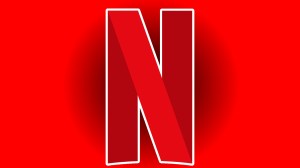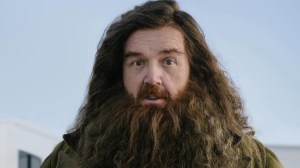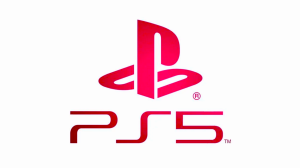
20 years ago, when Marvel was bankrupt and flailing, lots of interesting things happened.
Videos by ComicBook.com
One of them was a crossover event with Wildstorm. Jim Lee‘s studio was still at Image at the time, and they four books that brought together the X-Men and the WildC.A.T.S.
The line-up of talent on them is incredible. Travis Charest’s World War II-era chapter is legendary in Wildstorm artistic circles. Jim Lee drew a book. Mat Broome drew the final book, written by a young upstart Jim Lee had writing “StormWatch” at the time, Warren Ellis.
The third book in the series features James Robinson on scripting duties, with Adam Hughes on art. Yes, there was a time when Hughes drew interiors more regularly. This book features somewhere around 40 pages of his sequential artwork. (I lack the patience to count the pages, sorry.)
Let’s take a closer look at this one…
The Story
A young mutant boy is missing, and the X-Men are searching for him. The WildC.A.T.s are hunting daemonites they believe are at the same place the missing boy is.
That place is the Hellfire Club.
Cool down — there’s no Emma Frost in this book. This Hellfire Club is all men and demons.

As far as plot devices go to bring together the two worlds, I think this one passes nicely enough. It also gives the two teams a chance to fight initially against each other, but also with each other at the climax of it all.
James Robinson’s script has moments of Chris Claremont-ian poetry in the captions. He doesn’t quite go in for the kill with the dialogue accents or the catch phrases, but his more flowery language in setting the scene is interesting. He only uses it to set a couple scenes in the beginning, but it’s effective. Aside from the moment the two teams band together, Robinson drives everything in the word balloons. He eschews captions everywhere else, save a couple of “later” captions.
He also starts with an unnecessary (I think) framing sequence. Cyclops pulls Spartan out of some rubble across two pages, amidst a covering of fallen Hellfire Club thugs.
Then we skip back a couple of months to start the series of events that takes us to that moment. But the second opening, with Nightcrawler perched in the tree until interrupted in startling fashion by Warblade, would stand on its own just fine as the opening. You might need to get to their initial contact a little faster, but it caught my attention and pulled me into the story.
The main draw of the book is in the middle section when Emp, Voodoo, and Spartan accept an invitation to visit the club, under cover as a wealthy old dude and his assistants. They’re welcomed into the club and expected to take part in all its hedonistic pleasures. Oh, and the bedrooms are bugged, so you better make it look good.
In the end, characters wind up tied up, demons are conjured up straight out of a Mike Mignola comic book, and the two title teams fight together against a common enemy.
They live happily every after, though they part on uncertain ground from the differences in their general viewpoints. WildC.A.T.s are much more violent.
It’s a simple plot device to serve the crossover’s purpose, but it works for the fun it brings.
The Art of Adam Hughes
You may not realize this, but Adam Hughes can draw beautiful women.
No, wait, you probably knew that much. Did you know he’s also capable of drawing men? He is, and he gets a lot of those chances in this book, particularly with Nightcrawler and Wolverine. It’s great to see how he crafts Nightcrawler’s every panel to be so shadow-filled — even outdoors in daylight in white snow. It’s quite the trick.

He defines those muscles and forms with his shadows, not with lines. It points to the light source as well as to the details in the costumes.
The shadows work even better with the summoned demon at the end. Hughes is channelling “Hellboy” there, and it works well for the book. It’s a nice contrast with the smooth and shiny superhero costumes to put the gnarlier grotesque demon emerging from the shadows and spreading its tendrils all around.
And, because James Robinson no doubt knew who he was writing for, he made there there was a scene where Voodoo got to show off her physique. It’s a moment played more for laughs than titillation, and then it cuts short. Don’t you hate it when the plot gets in the way?
The other thing that struck me about Hughes’ art here is in the backgrounds. In establishing interiors, he’ll take a large panel to draw the outlines of lots of bits and pieces, like bookshelves and tables and staircases. But they’re left open, without any line weight variation or any shadowy sections.
When he gets into moodier set pieces, whether it be in a forest or an underground dungeon area, the shadows come out to play in interesting ways. More silhouettes are formed, but so also are feathered sections that suggest textures or other lighting effects.
In the heat of a moment when all the action is in the foreground and characters are fighting, the backgrounds disappear into colored shapes given form by the crafty shadow work. If you look closely enough, you realize that everyone’s sort of floating in space with the occasional reference point to ground them.
Mostly, though, you don’t notice unless you’re a critical eye reviewing the issue to have something to say in a 1000 word column. 99% of readers are the lucky ones. It’s just the cross I bear…
At the same rate, I’m not sure there’s much worth looking at for backgrounds in the moors at night or in what is effectively a cave/dungeon/basement.
So I’ll let him get away with it. Because, let’s face it, comics is a deadline-driven business and decisions must be made and sacrifices come into play in service of that.
In Summary
The whole four issue set of comics is a fun read. No, it’s not the next “Watchmen” or anything, but for Wildstorm fans, it’s pretty cool. Wildstorm spared no expense in putting its people to work on this, and the results look pretty good. (That Travis Charest book is ridiculously beautiful…)
This book, “The Modern Age,” is just an awful lot of fun.
They did do a trade paperback collecting the whole thing once upon a time. I’m sure it’s long out of print.
Given that DC now owns Wildstorm, I would suggest back issue bin diving for copies of these books. I don’t think Marvel and DC are getting along well enough lately to ever reprint these books or put them up on a digital service, and that’s a damn shame.
PipelineComics.com|| Twitter || Instagram || E-mail || YouTube









